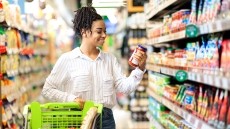Triple drivers behind cultures, Danisco VP
The investment, equal to 23 per cent of Danisco Cultures’ revenue for full year 2008/9, has been earmarked to convert a Genecor enzyme plant in Rochester, New York to cultures, and to expand two other existing sites, in Niebüll, Germany and Madison, Wisconsin.
The figures lend support to Danisco’s decision to build up the business. Last year’s revenue of DKK 1936m in full year 2008/9 (around €259.4m by today’s exchange rates) was 9 per cent up on the previous year. EBIT was up 23 per cent to DKK 320m.
But Doug Willrett, executive vice president of Danisco Cultures, told FoodNavigator.com that there are three main pillars to this growth story: the transition from bulk starters to direct vat inoculants, probiotics for human health, and antimicrobial cultures for safe food with fewer chemicals.
“If you roll all these together, that is what is driving the business,” he said.
Probiotics
First up, probiotics in foods and dietary supplements are capturing the attention of the health conscious around the world.
Asia has always been big in probiotics, and there was early growth in Europe. While that is continuing, the growth rate in the US is high, said Willrett. He attributed this partly to Danone, with its wide marketing of well-known brands such as Actimel.
Right now digestive health and immunity are key benefits being tapped by the market, but the expectation is that ongoing research will yield wider ranging benefits, such as satiety, for instance.
“We are at the early stages of what probiotics can do,” Willrett said.
Bulk to DVI
The need for convenience and versatility in food production is driving direct vat inoculants (DVI), frozen or freeze dried cultures that are more stable than those made by the traditional bulk starter method, and deliver a more stable product.
These cultures save the user significant time in maintenance, Willrett said, and a cheese maker can switch much more easily between different kinds of cheeses at will as they can simply use different cultures.
Safety, naturally
The third pillar to Danisco’s cultures confidence is the use of pathogen-protective cultures, which are added to products like meat and yoghurt by direct inoculation.
The drive behind this is the natural trend, Willrett said. “A number of customers are looking to clean up labels, taking out chemicals that are effective but less consumer friendly.”
In addition to cultures, Danisco can also offer metabolites to boost food safety – that is, the anti-microbial compounds produced by the culture, but not necessarily the culture itself as well.
Expansion plans
Danisco Cultures has cultures sites all over the world and the division employs around 850 people overall. Several of these other sites have been “debottleknecked” in the past year to increase efficiency.
As well as to adding to the vast collection of microorganisms in its store, much R&D energy is devoted to process efficiency improvements, such as exploring growth conditions and fermentation media to make the cultures more robust.
Acquisitions, too, are contributing to extended reach in the market. Last year Danisco acquired US company Agtech Products, which brought in cultures for non-animal and non-food markets.
It also bought its first cultures plant in China, Beijing Ferment. Although capacity there is small, it’s an important site to serve Chinese customers, Willrett said, in a market where fermented yoghurt is proving especially popular.
As for expansion potential in China, a major emerging market for consumer goods, he added: “There are no immediate plans”.





















